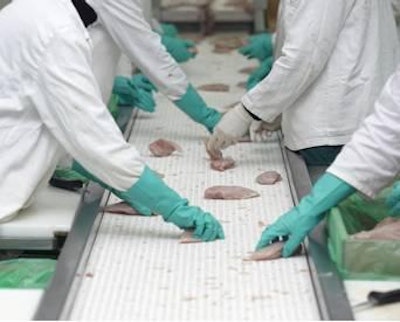
Modern businesses, be they poultry businesses or any others, increasingly operate in the global market and share several characteristics.
Among these common qualities tend to be dynamism, surprisingly high levels of innovation in the development and production of new products, a drive to produce useful products at affordable prices, a vision to bring products to markets that make consumers’ lives easier, and the deployment of information technology allowing them to keep up to date in real time.
It’s worth looking at these characteristics in a little more detail before looking at how the poultry processing sector fares.
Dynamism
Speed makes a difference. Those companies that lead the market are those that meet people’s needs with an astonishing speed. Products are produced quickly and produced well; with this in mind, company staff work quickly, but pay attention to every detail, so meeting the needs of the consumer.
Product and technology innovation
Company strategies are directed toward identifying hidden needs and attracting new clients, with the aim of improving the overall quality of life of the customers a business serves.
New products at competitive prices
Companies are continually thinking about the simplest and most practical way to design and use products, with the idea being that consumers adopt them in the shortest time possible. Price is also a key factor in the development process, with the aim being that products can be bought by various segments of the market.
Vision to make consumers’ lives ever-easier
The gradual increase in the amount of time spent in paid work means that day-to-day activities now need to be carefully planned if work and family commitments are to be fully met.
Technology and rapid communication
The efficiency of modern communications means that companies and consumers alike have instant access to information. This has not only broken down barriers to information, but also cultural barriers.
So how does the poultry processing industry rank when judged by these criteria?
Highly dynamic
The boom that has occurred in the fast food sector and the continued growth that this sector has experienced has resulted in strong demand for breast meat, and the poultry processing industry has had to become ever more efficient to keep pace with this strong demand for one of its products.
Innovation in technology application and product development
There are high levels of teamwork between broiler meat producers and those companies that support their business through the supply of equipment. This has resulted in the creation of a culture centered on research and development.
Practical products, affordable prices
The poultry industry has identified and responded to consumer needs for products that take less time to prepare, to cook and to eat. In addition, today’s products are produced at reasonable prices, making them accessible to a broad section of society.
Making the consumer’s life easier
The increase in households in which both parents work outside the home has resulted in the challenge of maintaining a work-life balance.
Have poultry processors helped to make this balancing act easier? A simple visit to the supermarket refrigerators will show that that there is now a broad range of chicken-based products available to meet every taste and budget. This offering helps to ensure that the nutrition of the family is assured.
Information technology
The value of technology and communication cannot be underestimated for the poultry sector. All participants in the production chain should be connected, but there are two axes in particular where communication needs to be especially strong.
The first runs between the farm and the processing plant. The group responsible for pre-slaughter, comprising feed withdrawal, capture and transport to the plant, should be represented at the processing plant to monitor not only how birds are kept prior to slaughter, but also other indicators.
The representative needs to ensure that equipment is properly adjusted so that it does not damage the birds during processing, which would affect quality and yield.
The quality of feed withdrawal also needs to be monitored.
If feed withdrawal has been too short, birds will leave the last plucker with feed still in the crop and, should the crop break during evisceration, the risk of contamination rises. Similarly, the representative needs to assess whether withdrawal has been too long, by assessing the condition of the intestines, gall bladder and gizzard during evisceration.
Should irregularities be detected, the representative should not only immediately inform the farm, but also the plant manager so that remedial action can be taken.
A second group, made up of employees with responsibility for marketing, must continually be in search of feedback.
The marketing area should be in regular contact with clients to identify needs. When staff visit clients, they should evaluate how well products are managed in the cold chain.
A close eye also needs to be kept on the competition. Are they offering products and services that may be different or better?

















